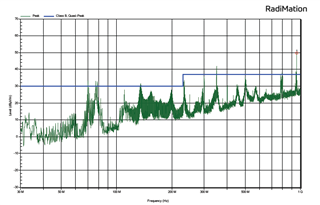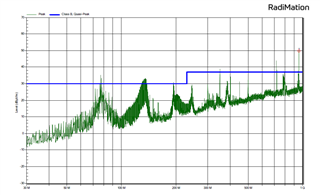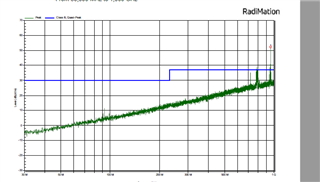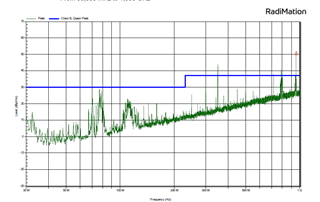Hello,
We have a problem with the radiated emission of our product. It exceeds the limits of the CE radiated emission testing. After a long search we didn’t find the source of the problem. So to verify that the problem is in our product we tested also the LMR16010PEVM. To our surprise the sample problem appears on the reference design..

This the radiated emission of the LMR16010PEVM. 12V input 500mA output with a resistance static load.
To verify that the leads are not emitting the problem we added filtering at the input and output leads.

It even got worse. The filtering in our product is even beter, the same peaks are visible only higher. at 20db above the line.
After a lengh search the conclusion is the LMR16010 itself is emitting the radiation.
Can someone at TI explain what the cause is of those emmitions.
Thanks!




